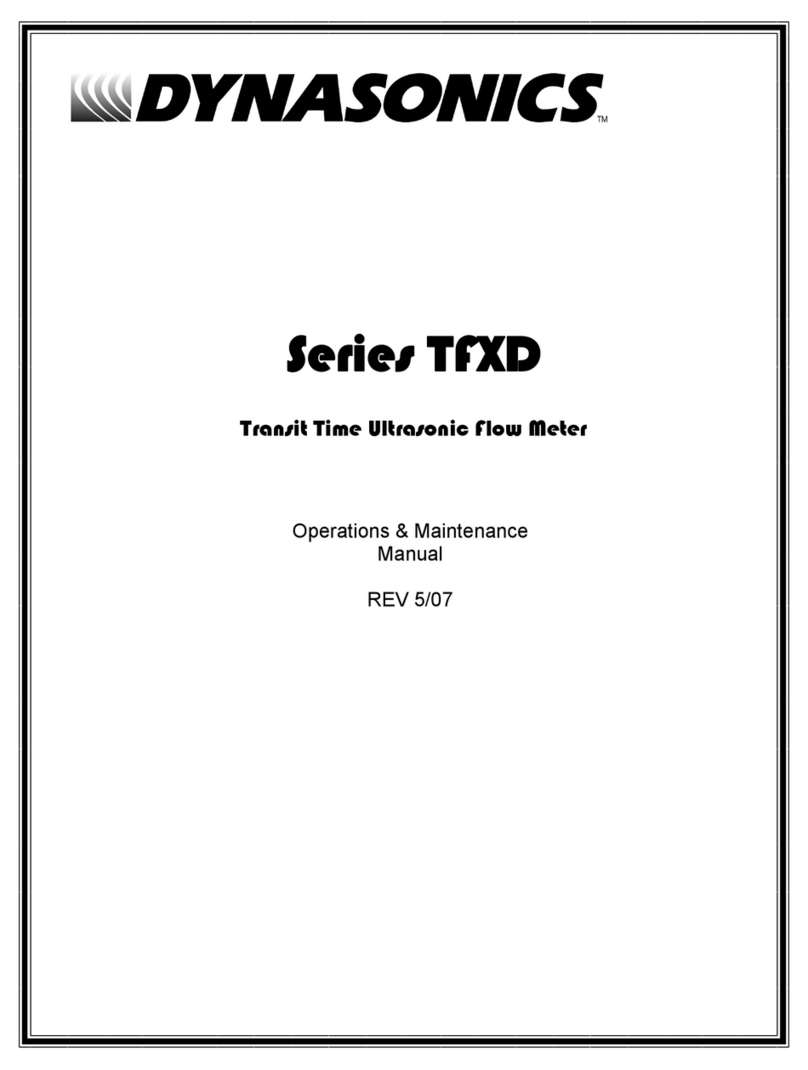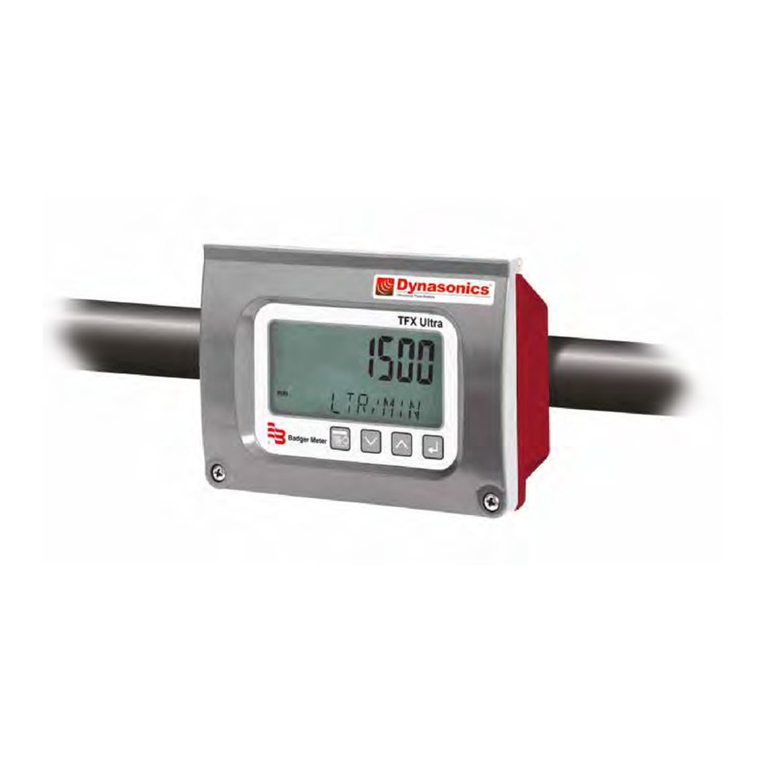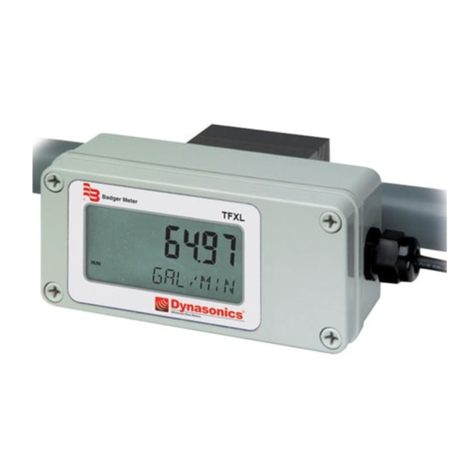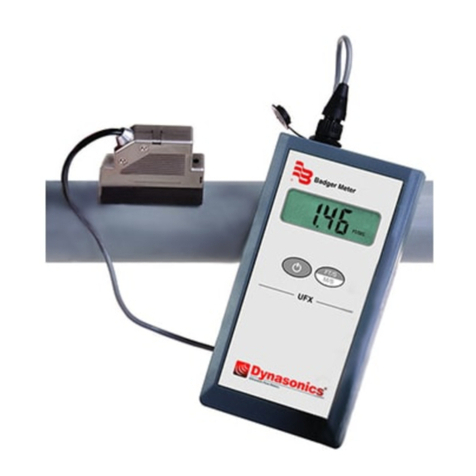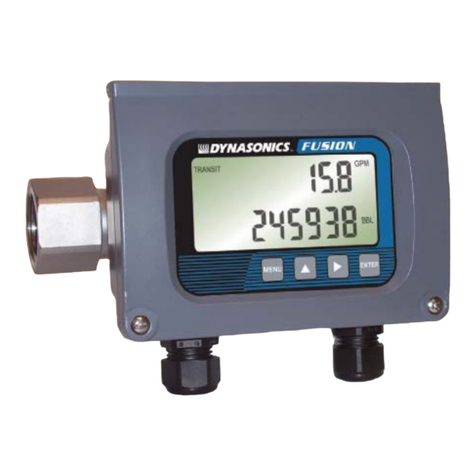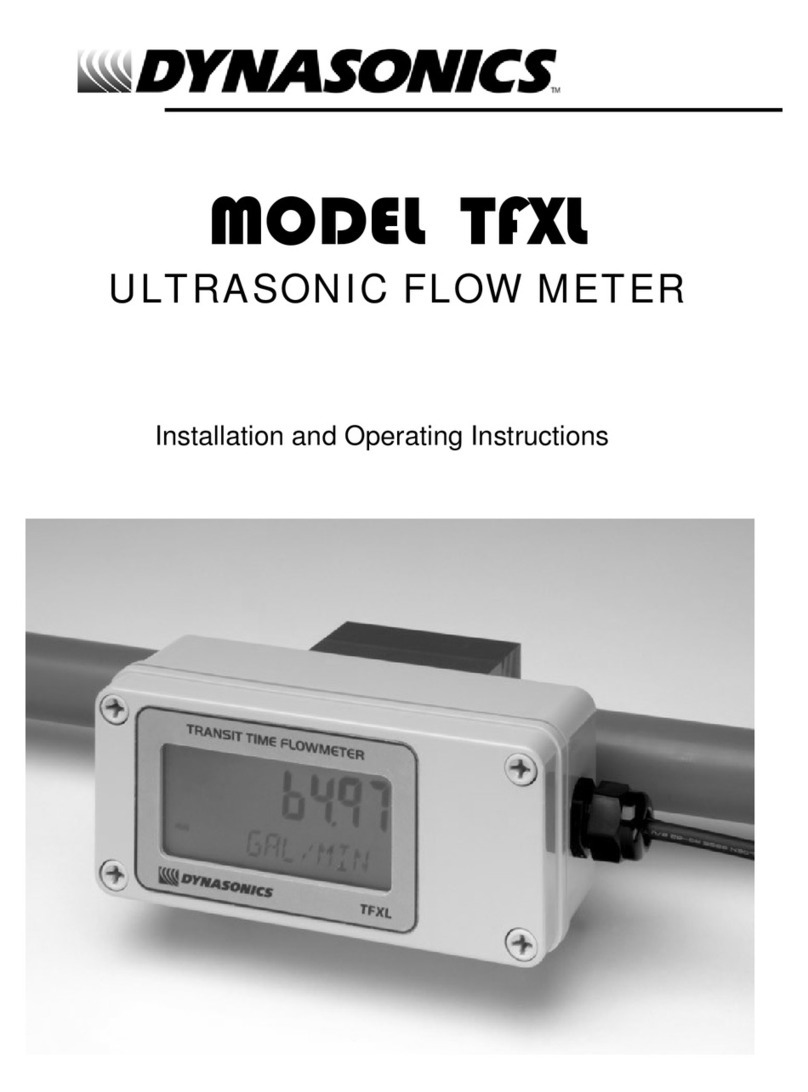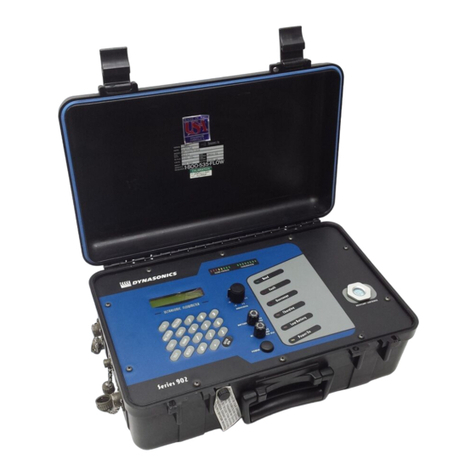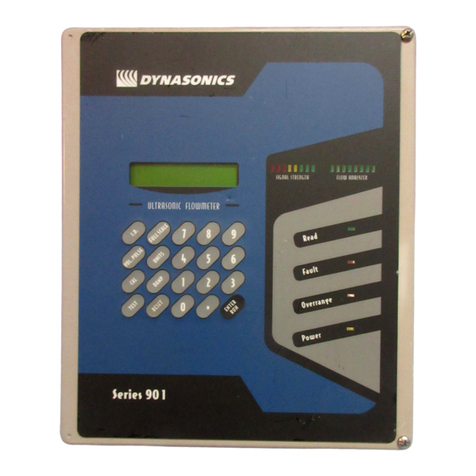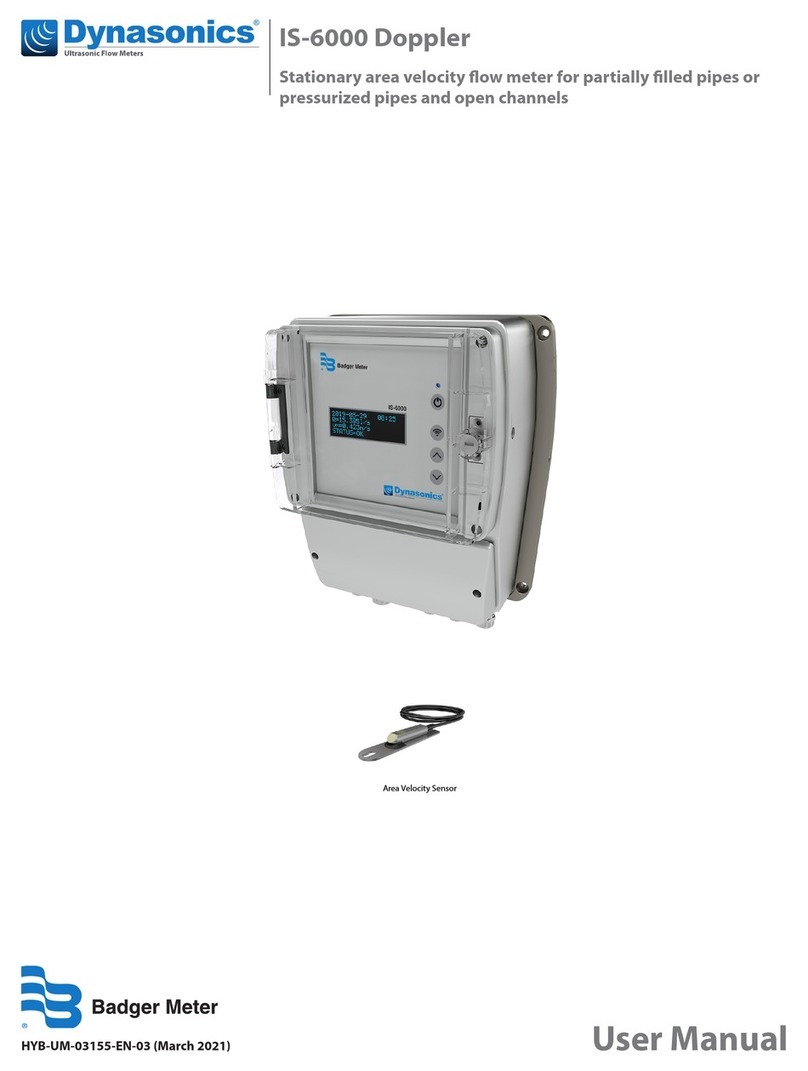
Form 06-HYB-UM-00010 1/12 5
PIPE PREPARATION AND TRANSDUCER MOUNTING
DTTN and DTTL Transit Time Transducers
1) During this procedure the ow meter’s signal quality value should be observed. This value is avail-
able on the DXN Display Tab ►Meters Page where “TT Signal Quality” is one of the parameters
that can be shown.
2) The pipe surface where the transducers are to be mounted must be clean and dry. Remove scale,
rust or loose paint to ensure satisfactory acoustic conduction. Wire brushing the rough surfaces of
pipes to smooth bare metal may also be useful. Plastic pipes do not require preparation other than
cleaning.
3) Apply a single ½” (12 mm) wide by approximately ⁄” thick bead of acoustic couplant grease to the
upstream transducer and secure it to the pipe with a mounting strap.
4) Apply acoustic couplant grease to the downstream transducer and press it onto the pipe using
hand pressure at the calculated lineal distance.
5) Space the transducers according to the recommended values found during programming. Secure
the transducers with the mounting straps at these locations.
DTTSU Universal Small Pipe Transit Time Transducers
1) During this procedure the ow meter’s signal quality value should be observed. This value is avail-
able on the DXN Display Tab ►Meters Page where “TT Signal Quality” is one of the parameters
that can be shown.
2) The pipe surface where the transducers are to be mounted must be clean and dry. Remove scale,
rust or loose paint to ensure satisfactory acoustic conduction. Wire brushing the rough surfaces of
pipes to smooth bare metal may also be useful. Plastic pipes do not require preparation other than
cleaning.
3) Set the downstream transducer spacing to the value found on the Site Group ► Transit Page.
4) Apply a single ½” (12 mm) wide by approximately ⁄” thick bead of acoustic couplant grease to the
face of each transducer and secure it to the pipe with attachment chains.
5) Tighten the two thumb screws evenly so that the acoustic coupling grease begins to ow out from
the edges of the transducer and from the gap between the transducer and the pipe. Do not over
tighten.
DT94 Doppler Transducers
1) In general, select a mounting location on the piping system with a minimum of 10 pipe diameters
(10 × the pipe inside diameter) of straight pipe upstream and 5 straight diameters downstream.
See Table Q.1 for additional congurations.
2) The pipe surface, where the transducers are to be mounted, must be clean and dry. Remove scale,
rust or loose paint to ensure satisfactory acoustic conduction. Wire brushing the rough surfaces of
pipes to smooth bare metal may also be useful. Plastic pipes do not require preparation other than
cleaning.
